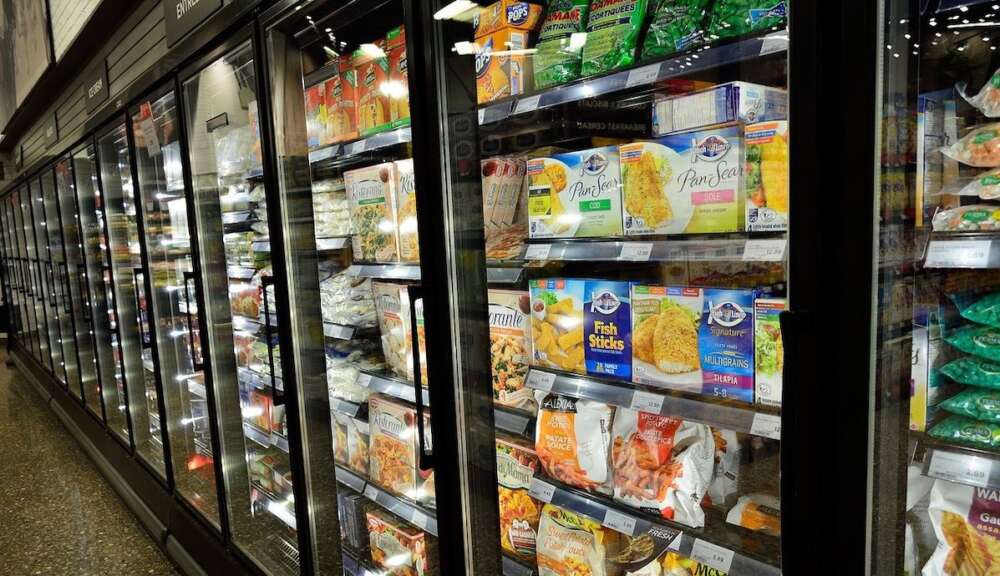By Dr. Mike von Massow, Department of Food, Agricultural and Resource Economics, Ontario Agricultural College
This article is republished from The Conversation Canada under a Creative Commons licence. Read the original article.
Despite Canada’s inflation rate falling to its lowest point in two years, food prices remain high. The Consumer Price Index slowed to 2.8 per cent in June compared to last year, but food prices increased by 8.3 per cent. Food prices in stores increased by 9.1 per cent.
The gap between general inflation and food prices is puzzling — and frustrating — for many, especially because the Bank of Canada’s interest rate hikes don’t seem to be affecting food prices at all. In periods of high inflation, central banks raise interest rates to moderate price increases, or, ideally, bring them down.
But food prices don’t respond to interest rate policies as much as other factors do. This is because food demand is relatively steady — we can’t put off food purchases like we might put off the purchase of a new computer or car.
So if interest rates won’t help bring down food prices, what will?
Competition Bureau report urges more competition in food retail

Canada’s competition watchdog, the Competition Bureau, recently released a report that called for more competition in the Canadian food retail market. The report suggested that more competition might help high food prices in Canada.
The report also acknowledged that some retailers have non-grocery businesses which can muddy the waters relative to food margins. In fact, Loblaw executives have attributed the company’s growth to increased sales at Shoppers Drug Mart.
Similarly, Eric La Flèche, president and CEO of Metro, told the Standing Committee on Agriculture and Agri-Food in March that Metro’s food margin had actually decreased, but was offset by a higher pharmacy product margin.
The CEO of Sobeys testified that they didn’t see the same growth as Metro and Loblaws because their pharmacy business is smaller. However, the Competition Bureau’s report ignored this, instead focusing on individual profit growth, which was similar for all three major brands.
Although this is just a small sample, if margin growth truly played a significant role, we would expect it to be more directly reflected in profit growth.
Foreign competition would benefit Canadians
The Competition Bureau’s report also suggested that more foreign competition would benefit Canadian consumers, but that foreign competitors viewed the Canadian market as tough to break into.
A spokesperson from the Retail Council of Canada said foreign competitors didn’t feel they would be able to compete when it comes to prices. Given this, it’s difficult to see how foreign competition would actually help bring prices down.
Retail concentration can be a concern if it gives companies the power to extract higher profits from consumers. On the other hand, size provides economies of scale, which allows companies to build efficient distribution networks and buy in larger volumes.
But the report is completely silent on the trade-offs between concentration and economies of scale. If too many efficiencies are lost through less concentration, prices could actually go up.
It is worth highlighting that when Sobeys bought a controlling share in Longo’s (a premium regional grocery chain in Ontario) they highlighted distribution and sourcing as key benefits of the deal. Longo’s will operate as it always has but benefit from better buys and distribution reducing costs.
If all of this is true, then what’s actually causing food price inflation?
No single cause for food inflation

The reality is that there isn’t a single cause for food price increases in Canada; there are a combination of factors that affect different food categories.
Edible fats and oils have gone up almost 20 per cent in the past year, while ham and bacon have actually decreased by 3.4 per cent. This suggests price differences are coming from a variety of causes.
Russia’s invasion of Ukraine has had a significant impact on the prices of wheat and edible oils. As a result, wheat-based products like pasta, bread and flour have seen increases.
The impact of the war was made worse by countries limiting exports to protect domestic consumers. India curtailed wheat exports, Argentina limited wheat and soybean oil and Indonesia limited palm oil exports. This puts even greater pressure on price.
While there was a short respite when Turkey brokered a deal with Russia to allow Ukrainian grain to flow, Russia recently said it will not renew the deal and is attacking and destroying Ukrainian export infrastructure. Prices may rise again.
A perfect storm of factors pushing prices up
Extreme weather has also played a significant role in food price inflation. Flooding in California’s Salinas Valley caused disruptions in lettuce and tomato production, leading to higher prices for these products.
Europe had price increases and product shortages this winter due to bad weather conditions in northern Africa and southern Europe. As weather events get more intense and more frequent due to climate change, these issues are likely to worsen in the future.
Besides extreme weather, other factors like supply chain disruptions and exchange rate volatility also contribute to changes in food prices.
All these factors are happening simultaneously to create a perfect storm of food price increases. Unfortunately, since there are so many factors involved, there isn’t a single factor that can bring down food prices. It’s a complex situation that will require careful consideration and multiple approaches to address.
The Conversation Canada is always seeking new academic contributors. University of Guelph researchers wishing to write articles should contact the U of G News Service.
